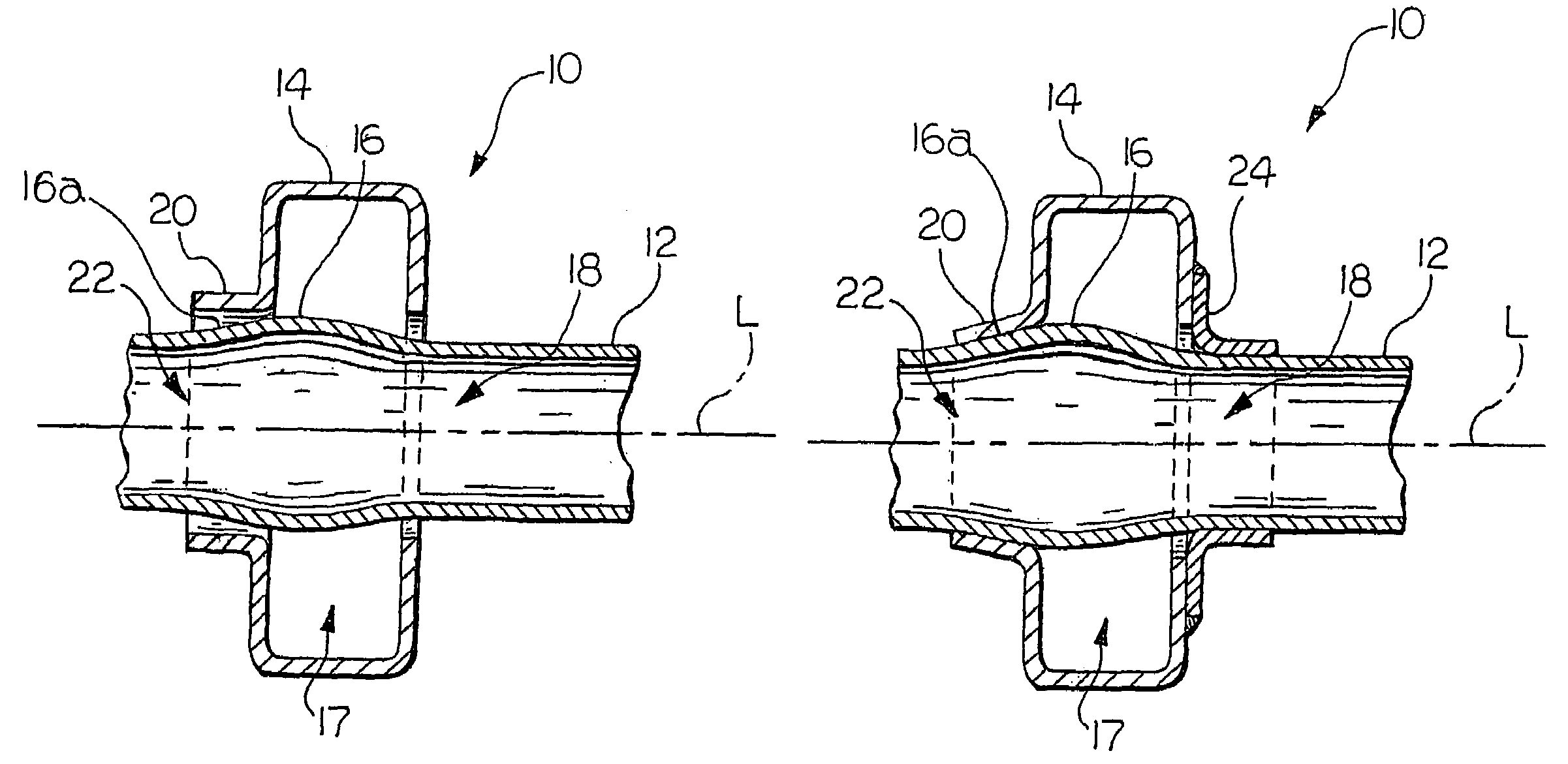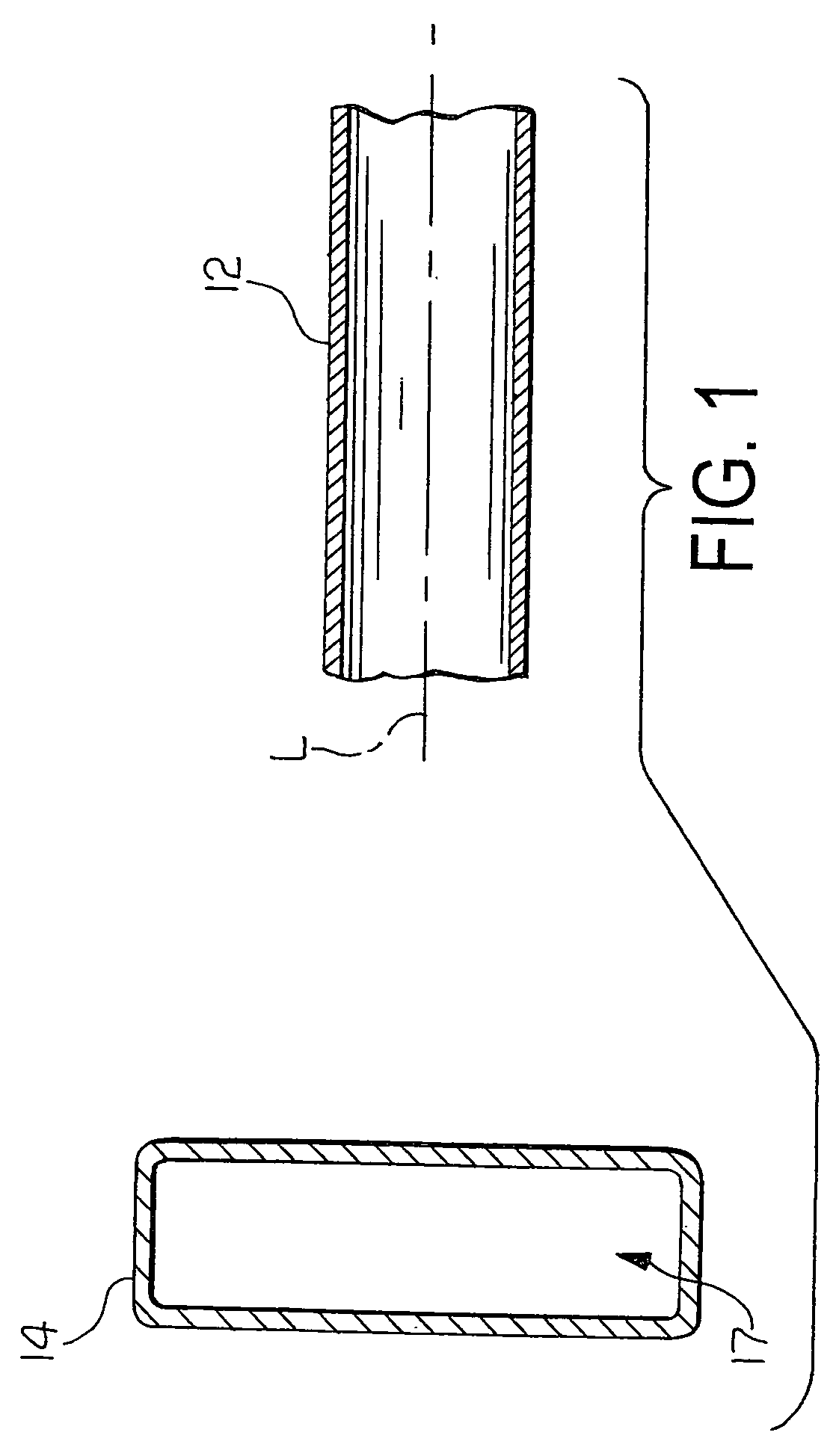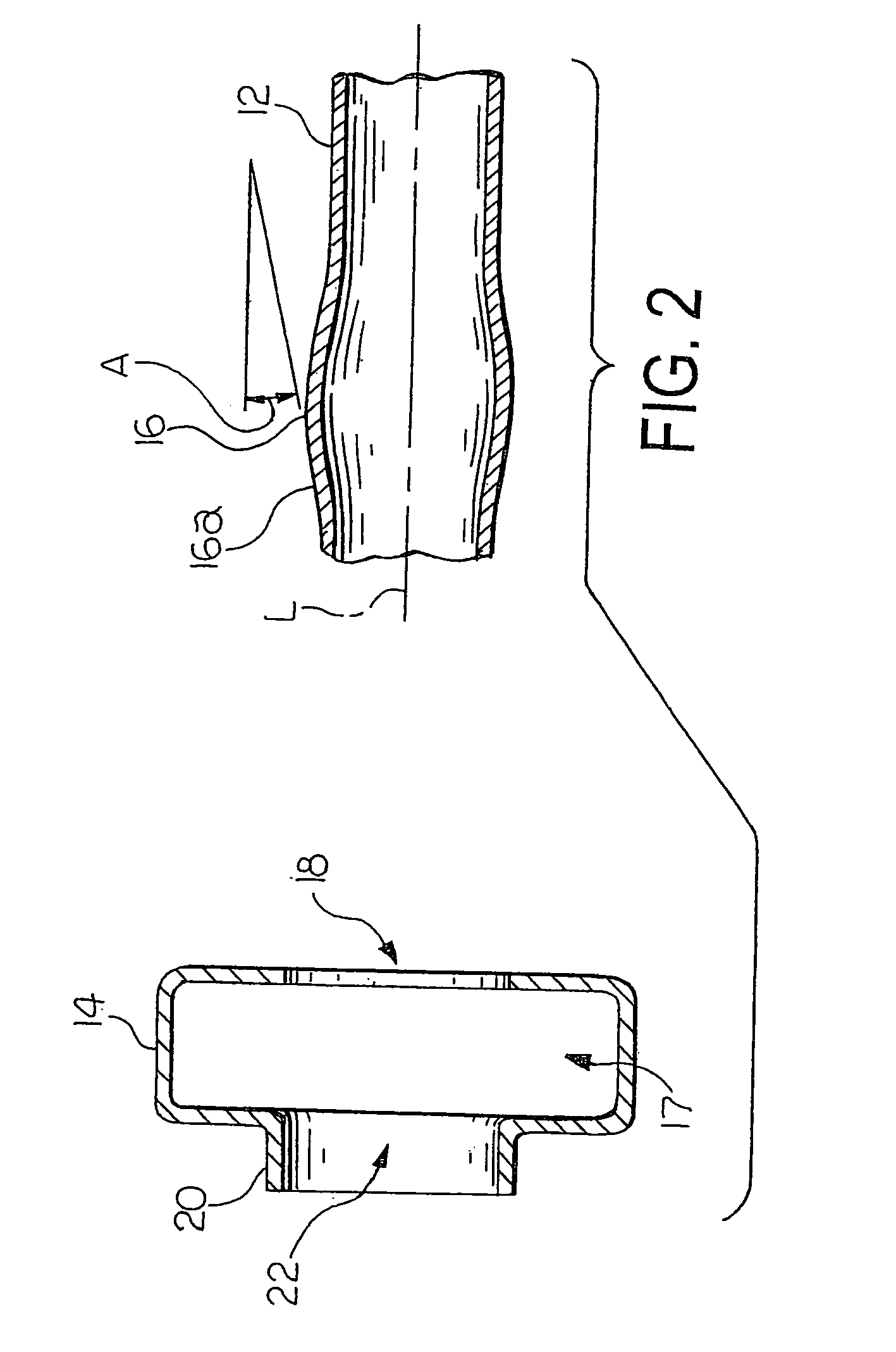Method of permanently joining first and second metallic components
a technology of metallic components and permanent joining, which is applied in the direction of manufacturing tools, couplings, transportation and packaging, etc., can solve the problems of relatively heavy steel alloys and relatively difficult permanent joining of such structural components using traditional welding techniques, and achieve the effect of facilitating the performance of the magnetic pulse welding process
- Summary
- Abstract
- Description
- Claims
- Application Information
AI Technical Summary
Benefits of technology
Problems solved by technology
Method used
Image
Examples
Embodiment Construction
[0015]Referring now to the drawings, there is illustrated in FIG. 1 first and second metallic components 12 and 14, respectively, that are shown prior to being permanently joined in accordance with the method of this invention. The first and second metallic components 12 and 14 can, for example, be embodied as a cross member 12 and a side rail 14 or other metallic structural components for use in a vehicular body and frame assembly. Such vehicular body and frame assemblies are, of themselves, conventional in the art, and the illustrated cross member 12 and side rail 14 are intended merely to illustrate one environment in which this invention may be used. Thus, the scope of this invention is not intended to be limited for use with vehicular body and frame assemblies. On the contrary, as will become apparent below, this invention may be used in any desired environment for the purposes described below.
[0016]The cross member 12 can be embodied as an elongated structural component that i...
PUM
| Property | Measurement | Unit |
|---|---|---|
| angle | aaaaa | aaaaa |
| angle | aaaaa | aaaaa |
| angle | aaaaa | aaaaa |
Abstract
Description
Claims
Application Information
 Login to View More
Login to View More - R&D
- Intellectual Property
- Life Sciences
- Materials
- Tech Scout
- Unparalleled Data Quality
- Higher Quality Content
- 60% Fewer Hallucinations
Browse by: Latest US Patents, China's latest patents, Technical Efficacy Thesaurus, Application Domain, Technology Topic, Popular Technical Reports.
© 2025 PatSnap. All rights reserved.Legal|Privacy policy|Modern Slavery Act Transparency Statement|Sitemap|About US| Contact US: help@patsnap.com



